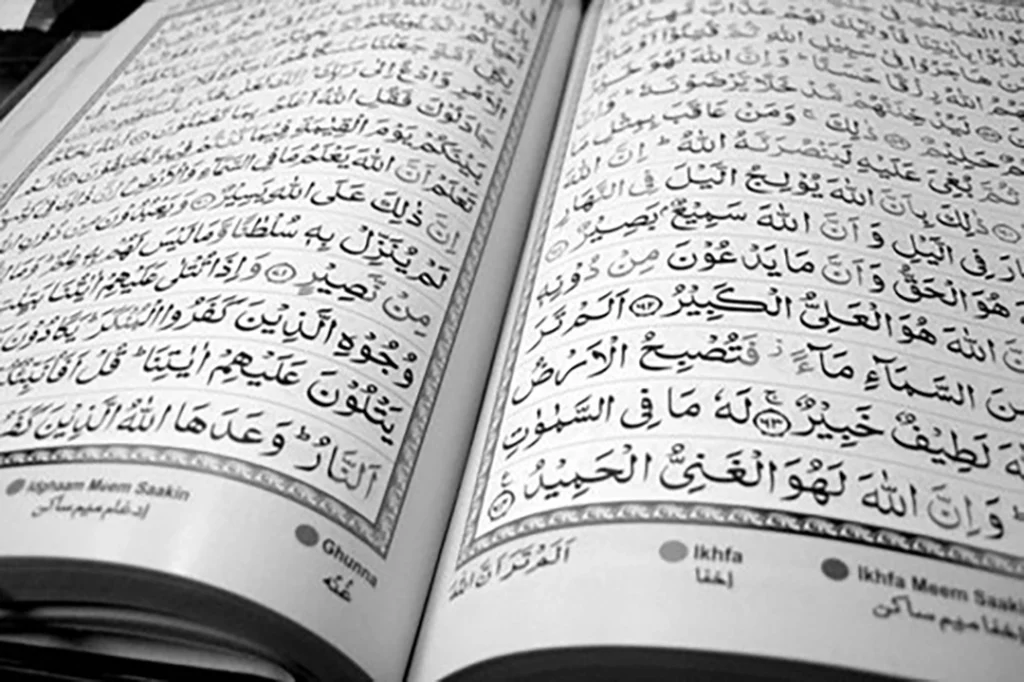It is not shame of a man if his right is postponed, but it is shame if he gives something to which he has no right.
Ali ibn Abi Talib (as)
Table of Contents
ToggleThis article provides insight into the subtle traits of the two letters showing how alike, different, and important they are in Arabic.
Chapter 1: The Arabic Alphabet and Its Phonetic Structure
1.1 Overview of the Arabic Alphabet
The Arabic alphabet stands as a key script in composing texts in Arabic language and various other tongues like Persian, Urdu, and Pashto. The Arabic script is made up of 28 letters and it is written from right to left; hence, it is set apart from quite several other alphabets. Depending on whether a letter is at the beginning, middle or end of a word or stands alone require that it be given its own form: initial, medial, final or isolated. This feature makes it difficult to learn but adds beauty to the art of Arabic calligraphy.
One of the most notable features of the Arabic alphabet is its use of diacritics. These marks are crucial for indicating short vowels and certain consonant sounds that are not represented by the letters themselves. In standard written Arabic—Modern Standard Arabic (MSA)—diacritics are often omitted in everyday texts such as newspapers and books; however, they are essential in educational materials and religious texts like the Holy Quran to ensure accurate pronunciation and understanding. The absence of vowel indication can sometimes lead to ambiguity in meaning.
The cultural significance of the Arabic alphabet extends beyond mere communication; it embodies historical traditions and artistic expression. Calligraphy holds a revered status within Islamic culture due to its connection with religious texts and poetry. Various styles have emerged over centuries—such as Naskh, Thuluth, and Diwani—each characterized by unique stylistic elements that reflect both artistic creativity and linguistic heritage.
1.2 The Importance of Pronunciation in Arabic
Pronunciation is an important aspect of the Arabic language which underpins successful communication and understanding. This unique language has a lot of phonemes, some of them do not exist in other languages. Its complexity necessitates accurate articulation for meanings to be conveyed correctly. The difference between emphatic and non-emphatic consonants can completely change the meaning of words; hence any slight mispronunciation might cause misunderstanding or even offensive interpretations. Thus, pronunciation proficiency remains a key requirement for those interested in learning this language so that they may meaningfully interact with natives.
Moreover, correct pronunciation enhances the learner’s ability to understand spoken Arabic in various dialects. Arabic is not merely a single language but encompasses numerous dialects that can vary significantly from one region to another. Each dialect has its unique phonological rules and pronunciations; thus, clarity in articulation allows learners to navigate these variations more effectively. A strong foundation in pronunciation equips students with the tools necessary to adapt their speech according to different contexts and audiences within the Arab-speaking world.
Furthermore, proper pronunciation contributes to cultural integration and identity formation among learners of Arabic. Language is intrinsically tied to culture; by mastering pronunciation, learners demonstrate respect for the linguistic heritage of Arab communities.
Chapter 2: The Letter (ت)
2.1 Phonetic Characteristics of (ت)
From various angles, it is clear that the phonetic properties of the Arabic letter (ت) associated with “taa” have made its pronunciation greatly difficult in Arabic language. This letter is classified as a voiceless alveolar stop; it is produced and has no vibration of vocal folds and causes a complete closure of the vocal tract at the alveolar ridge situated immediately behind the upper front teeth. Further, an accurate positioning of the tongue helps produce (ت) which has a unique sound that differentiates it from other phonemes such as those present in Modern Standard Arabic or different dialects.
In terms of its acoustic properties, (ت) exhibits a higher-frequency burst upon release compared to voiced counterparts such as (د) and (ب). This burst is characterized by its sharpness and brevity, contributing to its clear enunciation in spoken Arabic. Furthermore, when considering coarticulation effects in connected speech, (ت) may exhibit assimilation features depending on its surrounding phonetic environment. For instance, when followed by certain consonants or vowels, there can be subtle variations in articulation that affect both timing and quality.
Additionally, the role of (ت) extends beyond mere phonetic representation; it also serves grammatical functions within Arabic morphology. As a marker for feminine nouns or plural forms through morphological patterns such as “ta-marboota,” this letter plays an integral role in word formation and syntactic structure.
For better understanding of the pronunciation of this letter refer to: https://youtu.be/o1KCjhsBeQs?si=GiDAjbLelC8PJkQV
2.2 Orthographic Features of (ت)
Orthographically, t exhibits several notable features including the existence of two dots on top of rounded shape, distinguishing it from other letters like b and ث. This diacritical feature enhances its graphic identity while at the same time influencing its production in spoken language; for example, there are two dots that mean aspirated “t”. furthermore, the letter may take different shapes depending on where it appears within the text: isolated function or initial as well as medial and final forms revealing flexibility in writing. For instance appears at the beginning of a word in the form تــ or at the end as ـت، allowing for some continuity between words when written together.
Furthermore, (ت) serves various grammatical functions beyond mere representation of sound. It often indicates gender distinctions in nouns and adjectives; for example, many feminine nouns are formed by adding (ت) to their masculine counterparts.

Chapter 3: The Letter (ط)
3.1 Phonetic Characteristics of (ط)
The Arabic letter (ط), referred to as “ṭāʾ,” exhibits phonetic characteristics that are unique to it among other sounds in Arabic. Like any other voiceless emphatic alveolar stop, (ط) has a set of properties that are specific to it. The air flow is restricted at the level of the alveolar ridge while in addition; there is the reverse position of its tongue. Thus, it is emphatic. This in turn means that the pronunciation of this sound affects the adjacent vowels frequently making them sound deeper or completely different than their normal pitch.
The categorization of (ط) as an emphatic consonant place it among other similar sounds in Arabic, such as (ص) and (ض). Emphatic consonants are characterized by their ability to raise the pharyngeal wall and retract the tongue root during articulation. This results in significant acoustic properties that distinguish them from their non-emphatic counterparts, thereby enriching the phonological system of Arabic. The presence of such distinctions is crucial for meaning differentiation; for instance, minimal pairs such as “طعام” (ṭaʿām – food) and “عام” (‘aam – year) illustrate how subtle variations can lead to entirely different lexical items.
For better understanding of the pronunciation of this letter refer to: https://youtu.be/vFXM_JK92ro?si=Uq5lcnOnVWNHNray
3.2 Orthographic Features of (ط)
In a visual sense, ط has distinctive orthographic features that distinguish it among the other Arabic letters. It has a round body with an elongated tail hanging down at the bottom. When written independently or as the first letter of some words, it stays the same; however, the shape changes for medial or final positions in words because Arabic is written in a cursive style. The letter joins easily with letters before and after it without changing its original form. This flow illustrates how beautiful Arabic scripts are written and also gives insight into old writing customs.
Furthermore, ط plays an essential role in word formation and morphological processes within the Arabic language. It frequently appears in roots associated with strength or intensity, contributing to various derivatives across different grammatical forms.
Chapter 4: Comparative Analysis of (ت) and (ط)
4.1 Visual and Structural Similarities
In terms of appearance, (ت) and (ط) are similar because they have a common basic structure that consists of rounded shapes with two dots positioned above (ت). This similarity may confuse learners of Arabic; however, it is also an indication of their aesthetic unity despite being different in sound. Though based on similar basic strokes, the two letters differ in other attributes: (ت) has two dots on top of its rounded shape while (ط) doesn’t have any additional markings at all. These features not only distinguish them visually but also indicate their unique sound functions in words.
Structurally, both letters are categorized as bilabial consonants but serve different linguistic purposes. The letter (ت) represents a voiceless alveolar plosive sound /t/, whereas (ط), classified as an emphatic voiced dental stop /ṭ/, carries a heavier articulation due to its emphasis on pharyngealization.
4.2 Phonetic Differences
The Arabic sounds (ت) [taa] and (ط) [taa] are clearly distinguishable based on voice and manner of articulation which makes them a noticeable part of the language. These two consonants are classified into different groups in Arabic phonetic inventory with (ت) being referred to as a voiceless alveolar plosive while (ط) is termed as a voiced pharyngealized plosive. Such a classification not only serves to indicate their various production sites but also demonstrates their unique phonemic functions in the language. Since it has no vibrations, it produces a sharp, clear sound; hence it is used often in most contexts involving; native Arabic words.
In contrast, the letter (ط) embodies a unique characteristic known as pharyngealization or emphasis. This attribute modifies the quality of adjacent vowels and affects overall syllable structure. Pharyngealization involves constricting the pharynx during articulation, resulting in a deeper resonance that alters how speakers perceive surrounding sounds. Consequently, this has implications for semantic differentiation; words differing solely by these consonants can carry entirely different meanings. For instance, “كتابة” (kitaabah – writing) versus “قطابة” (qiṭaabah – type of cloth), where substituting one letter for another yield’s divergent lexical entries.
4.3 Linguistic Significance
The letter (ت) is pronounced as a voiceless alveolar plosive, akin to the English ‘t.’ It is commonly found at the beginning of words and serves as a marker for various grammatical forms, including verb conjugations and noun derivations. For instance, its presence can transform a root into a feminine form or indicate plurality. This morphological versatility underscores its significance in Arabic syntax where subtle changes in letter usage can lead to profound shifts in meaning.
In contrast, (ط) represents an emphatic sound produced with greater force from the throat. This distinction not only affects pronunciation but also alters semantic interpretation; words containing (ط) often carry connotations that differ from those with (ت). For example, while both letters may appear within similar roots, their presence can lead to different lexical fields—(ط) often conveys strength or intensity. Thus, understanding these nuances is essential for grasping the subtleties inherent in Arabic communication.

Chapter 5: The Role of Tajwid in Perfecting Pronunciation
Introduction to Tajwid and Impact of Tajwid on Learning (ت) and (ط)
Tajwid , derived from the Arabic root “جود” (to improve or make better), refers to the set of rules governing the proper pronunciation and articulation of letters in Quranic recitation. Its significance lies not only in preserving the phonetic integrity of the Grand Quran but also in ensuring that its meanings are conveyed accurately. Proper Tajwid (Tajweed) enhances the beauty and melodious nature of recitation, fostering a deeper spiritual connection for both reciters and listeners. As such, Tajwid (Tajweed) serves as a vital component in maintaining the authenticity of Quranic transmission across generations.
he principles of Tajwid (Tajweed) encompass several fundamental aspects, particularly concerning how specific letters are pronounced. The Arabic letters (ت) and (ط) exemplify this distinction; they represent different phonetic qualities that can alter meanings if mispronounced. The letter (ت), known as “Ta,” is articulated from the tip of the tongue against the upper gums, creating a softer sound that is more prevalent in everyday speech.
In contrast, (ط), referred to as “Ta Marbuta,” is produced with greater emphasis from deeper within the throat, resulting in a heavier tone characterized by its strong pharyngeal articulation.
Understanding these nuances is essential for effective Quranic recitation since mispronunciation can lead to semantic misunderstandings.
In summary, while the Arabic letters (ت) and (ط) share certain visual similarities, they are phonetically distinct and play crucial roles in the language.
Understanding the differences between these letters is essential for accurate communication and proper Quranic recitation.
By mastering the distinctions between (ت) and (ط), learners can appreciate the richness of the Arabic language and its phonetic depth.

















